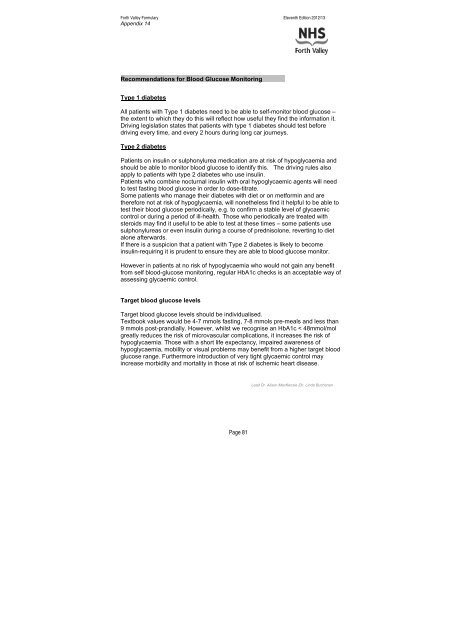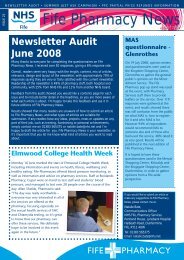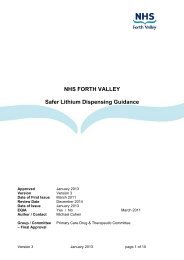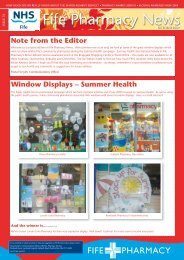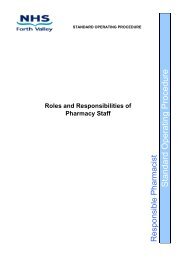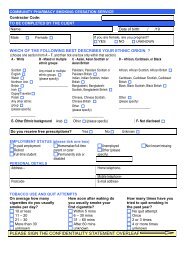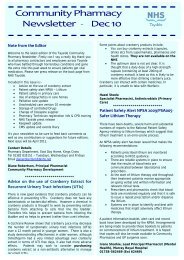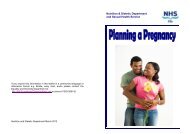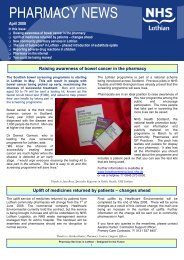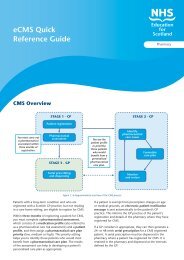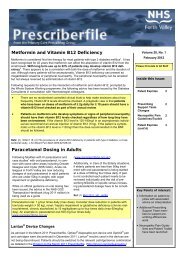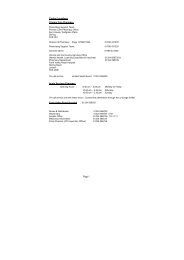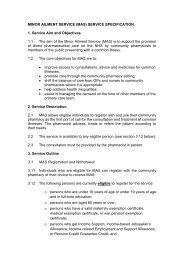nhs forth valley formulary 11 - Community Pharmacy
nhs forth valley formulary 11 - Community Pharmacy
nhs forth valley formulary 11 - Community Pharmacy
You also want an ePaper? Increase the reach of your titles
YUMPU automatically turns print PDFs into web optimized ePapers that Google loves.
Forth Valley Formulary Eleventh Edition 2012/13Appendix 14Recommendations for Blood Glucose MonitoringType 1 diabetesAll patients with Type 1 diabetes need to be able to self-monitor blood glucose –the extent to which they do this will reflect how useful they find the information it.Driving legislation states that patients with type 1 diabetes should test beforedriving every time, and every 2 hours during long car journeys.Type 2 diabetesPatients on insulin or sulphonylurea medication are at risk of hypoglycaemia andshould be able to monitor blood glucose to identify this. The driving rules alsoapply to patients with type 2 diabetes who use insulin.Patients who combine nocturnal insulin with oral hypoglycaemic agents will needto test fasting blood glucose in order to dose-titrate.Some patients who manage their diabetes with diet or on metformin and aretherefore not at risk of hypoglycaemia, will nonetheless find it helpful to be able totest their blood glucose periodically, e.g. to confirm a stable level of glycaemiccontrol or during a period of ill-health. Those who periodically are treated withsteroids may find it useful to be able to test at these times – some patients usesulphonylureas or even insulin during a course of prednisolone, reverting to dietalone afterwards.If there is a suspicion that a patient with Type 2 diabetes is likely to becomeinsulin-requiring it is prudent to ensure they are able to blood glucose monitor.However in patients at no risk of hypoglycaemia who would not gain any benefitfrom self blood-glucose monitoring, regular HbA1c checks is an acceptable way ofassessing glycaemic control.Target blood glucose levelsTarget blood glucose levels should be individualised.Textbook values would be 4-7 mmols fasting, 7-8 mmols pre-meals and less than9 mmols post-prandially. However, whilst we recognise an HbA1c < 48mmol/molgreatly reduces the risk of microvascular complications, it increases the risk ofhypoglycaemia. Those with a short life expectancy, impaired awareness ofhypoglycaemia, mobility or visual problems may benefit from a higher target bloodglucose range. Furthermore introduction of very tight glycaemic control mayincrease morbidity and mortality in those at risk of ischemic heart disease.Lead Dr. Alison MacKenzie /Dr. Linda BuchananPage 81


